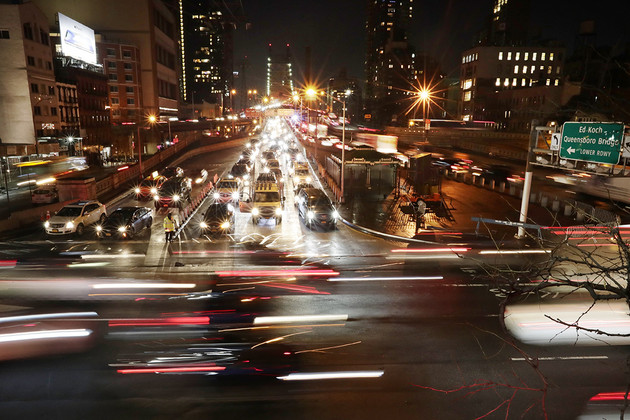Navigating New York City Congestion Pricing: A Revolutionary Step Forward
Introduction: Understanding the Significance
In a historic move, New York City became the first in the country to introduce congestion pricing, marking a watershed moment in urban traffic management. This revolutionary effort, which aims to reduce traffic congestion and improve air quality, establishes an example for urban regions throughout the world. Let’s go into the specifics of this groundbreaking method and its repercussions.
Deciphering Congestion Pricing
What is Congestion Pricing?
Congestion pricing is a dynamic tolling system used to manage vehicle traffic in crowded metropolitan areas. Congestion pricing, which charges cars for entering particular zones during peak hours, tries to encourage alternate forms of transportation while also alleviating traffic congestion.
The Importance of Congestion Pricing
Congestion pricing is more than just a remedy; it is a must for contemporary cities dealing with rising traffic congestion and environmental problems. With urban populations growing, traditional techniques to transportation management have become ineffective. Congestion pricing is a strategic intervention for reducing traffic congestion, lowering emissions, and promoting sustainable urban mobility.
New York City’s Bold Move
The Approval of Congestion Pricing
The introduction of congestion pricing in New York City ushers in a new era of transportation management in the United States. After years of discussion and agitation, officials approved this groundbreaking initiative, paving the way for substantial gains in urban mobility and environmental sustainability.
Understanding the Fee Structure
Under the approved proposal, motorists entering specified congested zones would be charged a toll beginning at $15. However, this cost is projected to change depending on a number of factors, including time of day and vehicle type. While some may see this as a substantial cost, it is critical to consider the long-term advantages of decreased congestion, better air quality, and improved public transit infrastructure.
The Road Ahead: Implications and Considerations
Impact on Traffic Patterns
Congestion pricing is expected to alter traffic patterns, forcing drivers to reevaluate their routes and travel times. Congestion pricing tries to improve urban mobility by distributing traffic over a longer period of time and rewarding alternate forms of transportation such as public transit, cycling, and walking.
Environmental Benefits
One of the key goals of congestion pricing is to reduce environmental deterioration caused by vehicle emissions. The congestion pricing project in New York City has the potential to significantly reduce air pollution and greenhouse gas emissions by reducing traffic congestion and encouraging the use of environmentally friendly transportation choices such as electric automobiles and public transit.
Equity and Accessibility
While congestion pricing has several advantages, it is critical to address issues of equality and accessibility. Low-income areas and vital workers who rely primarily on private automobiles may bear disproportionate financial costs. As a result, governments must establish fair measures such as exemptions, subsidies, and improved public transportation services to guarantee that congestion pricing remains accessible to all members of society.
Revolutionizing Urban Mobility: NYC’s $15 Congestion Pricing Unveiled!
Introduction: A Paradigm Shift in Transportation Management
New York City has revealed its revolutionary congestion pricing scheme in a daring step aimed at directly addressing urban congestion. This innovative move, which charges automobiles entering defined zones, marks a shift in traffic management tactics. Let’s look at the significance of this historic move and what it means for urban transportation.
Understanding Congestion Pricing: A Game-Changer in Traffic Management
Defining Congestion Pricing
Congestion pricing, a dynamic tolling system, has the potential to transform urban transportation by addressing issues of traffic congestion and environmental sustainability. This novel technique, which imposes fines on cars entering congested zones during peak hours, attempts to encourage alternate forms of transportation while also alleviating traffic jams.
The Significance of Congestion Pricing
Congestion pricing is more than just a remedy; it is a strategic need for modern cities dealing with increasing traffic congestion and pollution. Traditional traffic control measures have proven ineffective as urban populations grow across the world. Congestion pricing is a proactive intervention that optimizes traffic flow, reduces emissions, and improves urban quality of life.
NYC’s Congestion Pricing Unveiled: Key Insights
Approval and Implementation
After years of discussion and activism, New York City has formally approved its congestion pricing plan, marking a watershed moment in transportation policy. The adoption of this plan demonstrates the city’s commitment to sustainable urban growth and proactive traffic management.
Fee Structure and Implementation
According to the recently announced proposal, cars entering specified congestion zones will be subject to a toll beginning at $15. This tax, intended to discourage needless automobile travel during peak hours, will vary depending on time of day and vehicle type. While the initial cost may be high, it is critical to consider the long-term advantages of decreased congestion, improved air quality, and improved public transportation infrastructure.
Implications for Urban Mobility: Looking Ahead
Traffic Pattern Optimization
The congestion pricing effort in New York City is expected to cause major alterations in traffic patterns, prompting drivers to reconsider their commute habits and seek alternate modes of transportation. Congestion pricing attempts to improve urban mobility and reduce strain on existing road networks by distributing traffic over a longer duration and encouraging the use of public transportation, cycling, and carpooling.
Environmental Sustainability
One of the key goals of congestion pricing is to reduce vehicle emissions and environmental deterioration. By rewarding the adoption of environmentally friendly transportation options and lowering reliance on single-occupancy automobiles, NYC’s plan has the potential to result in significant reductions in air pollution and greenhouse gas emissions, contributing to a cleaner, greener city environment.
Breaking Ground: NYC Leads the Nation with $15 Congestion Pricing!
Introduction: A Landmark Moment in Urban Transportation
With its revolutionary $15 congestion pricing scheme, New York City has emerged as the vanguard of transportation innovation, with the potential to transform urban mobility. This brave measure not only marks a significant shift in traffic management, but it also demonstrates the city’s commitment to tackling serious environmental and infrastructure issues. Let’s look at the historical significance of this development and how it affects urban transportation across the nation.
Unveiling Congestion Pricing: A Paradigm Shift in Traffic Management
Understanding the Concept
Congestion pricing is a dynamic technique to traffic control in which cars are paid a price to enter specific zones during peak hours. Congestion pricing tries to ease congestion, cut emissions, and enhance overall urban mobility by using economic incentives to govern traffic flow.
The Importance of Innovation
As urban populations grow and traffic congestion worsens, traditional transportation management measures have grown increasingly ineffective. Congestion pricing provides a proactive approach to this important issue by leveraging market forces to improve traffic flow and encourage sustainable modes of mobility.
NYC Takes the Lead: Key Insights into Congestion Pricing
Policy Approval and Implementation
New York City’s implementation of congestion pricing is a watershed event in transportation policy, setting a precedent for cities around the country. The formal acceptance of this program demonstrates the city’s commitment to proactive traffic management and sustainable urban development.
Fee Structure and Dynamics
According to the recently announced proposal, cars entering specified congestion zones will be subject to a toll beginning at $15. This cost, which may vary depending on the time of day and vehicle type, is intended to discourage excessive automobile traffic during peak hours while also raising funds for infrastructure renovations and public transportation enhancements.
Implications for Urban Mobility: Looking Towards the Future
Traffic Optimization and Reduction
The congestion pricing effort in New York City is expected to cause major alterations in traffic patterns, prompting drivers to reassess their commute habits and seek alternate forms of transportation. Congestion pricing seeks to improve urban mobility and transportation network efficiency by decreasing congestion and encouraging the use of public transportation, cycling, and carpooling.
Environmental Sustainability
One of the primary objectives of congestion pricing is to mitigate the environmental impact of vehicular emissions. By incentivizing the use of eco-friendly transportation alternatives and reducing reliance on single-occupancy vehicles, NYC’s initiative holds the potential to yield substantial reductions in air pollution and greenhouse gas emissions, fostering a healthier, more sustainable urban environment.
Conclusion: Pioneering Progress Towards Sustainable Transportation
New York City’s implementation of $15 congestion pricing is a big step toward reinventing urban transportation for the twenty-first century. By promoting innovation, sustainability, and equal access, the city is paving the way for a future in which transportation congestion is decreased, emissions are reduced, and urban mobility is maximized. As other cities consider similar steps, New York City’s pioneering project demonstrates the transformational power of proactive policymaking in constructing the cities of the future.




